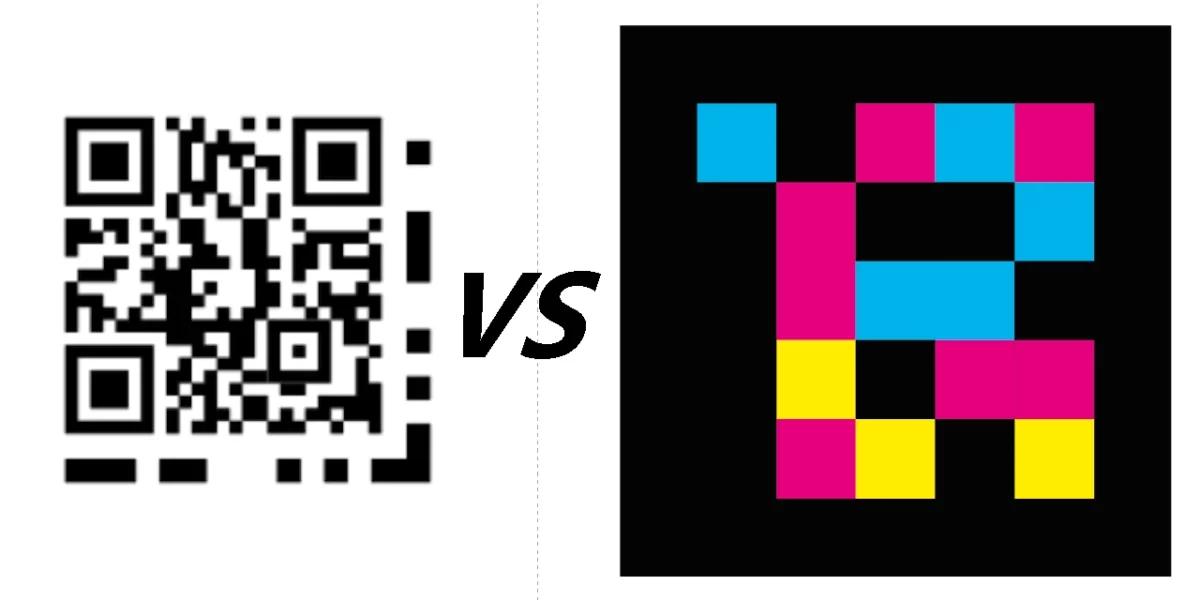With Kellogg’s using NaviLens and UniLever using Accessible QR codes (AQR) by Zappar, I wanted to understand more about Accessible QR codes vs NaviLens tags.
Let us compare two solutions for making QR codes more accessible for the blind and partially sighted: Zappar’s Zapvision and NaviLens. QR codes are widely used to link physical objects to digital information, such as websites, videos, or augmented reality (AR) experiences. However, scanning QR codes can be challenging for people with visual impairments, who may not be able to locate, focus, or align the codes with their devices. Zapvision and NaviLens are two technologies that aim to overcome these barriers and provide more inclusive and empowering experiences for the visually impaired.
Accessible QR (ADR)
Zapvision is an integrated system that enables brands to provide important product information to users through QR codes. Zapvision uses a D3 ‘dot-dot-dash’ pattern that augments the design of standard QR codes, maintaining their destination for sighted users, while unlocking enhanced distance detection and audio cues for blind and partially sighted users. Zapvision users can scan accessible QR codes up to 1.2m away using a free app or any app that integrates the Zapvision SDK. The app will then provide relevant product information, such as allergens, dietary preferences, or on-pack information, using the device’s built-in accessibility features such as voice assist.
NaviLens
NaviLens is another technology that uses a proprietary computer vision algorithm to detect colorful tags that contain digital information. NaviLens tags are similar to QR codes, but they use bright colors to stand out and can be scanned from much longer distances (up to 60 feet away) and wider angles (up to 160 degrees) than QR codes. NaviLens tags can also be read very fast (in 0.03 seconds) and in all light conditions. NaviLens users can scan the tags using a free app that provides audible information contextualized to the user’s location and orientation. NaviLens tags can be used to provide guidance and navigation in public spaces, such as subway stations, bus stops, museums, or public buildings.
Comparison: Accessible QR Vs NaviLens
Both Zapvision and NaviLens have advantages and disadvantages when it comes to making QR codes more accessible for the blind and partially sighted. Zapvision has the benefit of being compatible with existing QR codes and requiring minimal changes to product packaging or design. Zapvision also allows brands to provide two distinct user experiences with a single code: one for sighted users who can access webpages or AR experiences with standard camera apps, and one for visually impaired users who can access product information with Zapvision enabled apps. However, Zapvision has some limitations in terms of distance detection (up to 1.2m) and speed of scanning compared to NaviLens.
NaviLens, on the other hand, has the advantage of being able to scan tags from much farther away and faster than QR codes or Zapvision. NaviLens also provides more accurate distance and orientation information for the user, which can be useful for navigation and guidance purposes. However, NaviLens has some drawbacks in terms of compatibility and adoption. NaviLens tags are not compatible with standard QR codes or camera apps, and require a separate app or SDK to scan them. NaviLens tags also require more space and visibility than QR codes or Zapvision, which may not be feasible or desirable for some products or environments.
Accessible QR Vs NaviLens Conclusion
In conclusion, Zapvision and NaviLens are two innovative solutions that aim to make QR codes more accessible for the blind and partially sighted. Both technologies have their strengths and weaknesses depending on the use case and context. Zapvision is more suitable for products that already use QR codes and want to provide additional product information to visually impaired users without changing their packaging or design too much. NaviLens is more suitable for public spaces that want to provide guidance and navigation to visually impaired users using colorful tags that can be scanned from long distances and wide angles. Both technologies have the potential to enhance the accessibility of physical objects and digital information for everyone. For both solutions, additional apps are needed, restricting the ease of use.
Tell me what you think in the comments below or on X @timdixon82


5 replies on “Accessible QR Vs NaviLens”
I use Navilens for personal use. However, a question. If I make the description of the code an URL, is it possible to make that URL an active link? Thanks. William
Hi William, I am not sure. I have requested some codes to have a play with them.
Hi William,
I have had a play with the personal codes and if you put the URL into the note, it will show up as a link which you can follow. So in short, I believe it will do what you are looking for.
Kind Regards
Tim
Hey Tim, nice post. There are so many pros and cons but I wanted to make one clarification. Brands can actually use a combined NaviLens (NL)and traditional QR code together. I’ve not seen it on a product yet, but the traditional QR code becomes the centre of the NL code with the NaviLens colours surrounding it like a border. This does two things, 1) allows non NL app users scan the QR code as normal 2) makes the QR code more accessible to NL users as the NL code enables easier scanning of the traditional code thanks to their tech plus all the benefits of NL native information. I think it would be worth researching and updating your post to ensure it captures this.
Thanks Paul. I wasn’t aware of this. I will research and update. I appreciate you highlighting this feature.